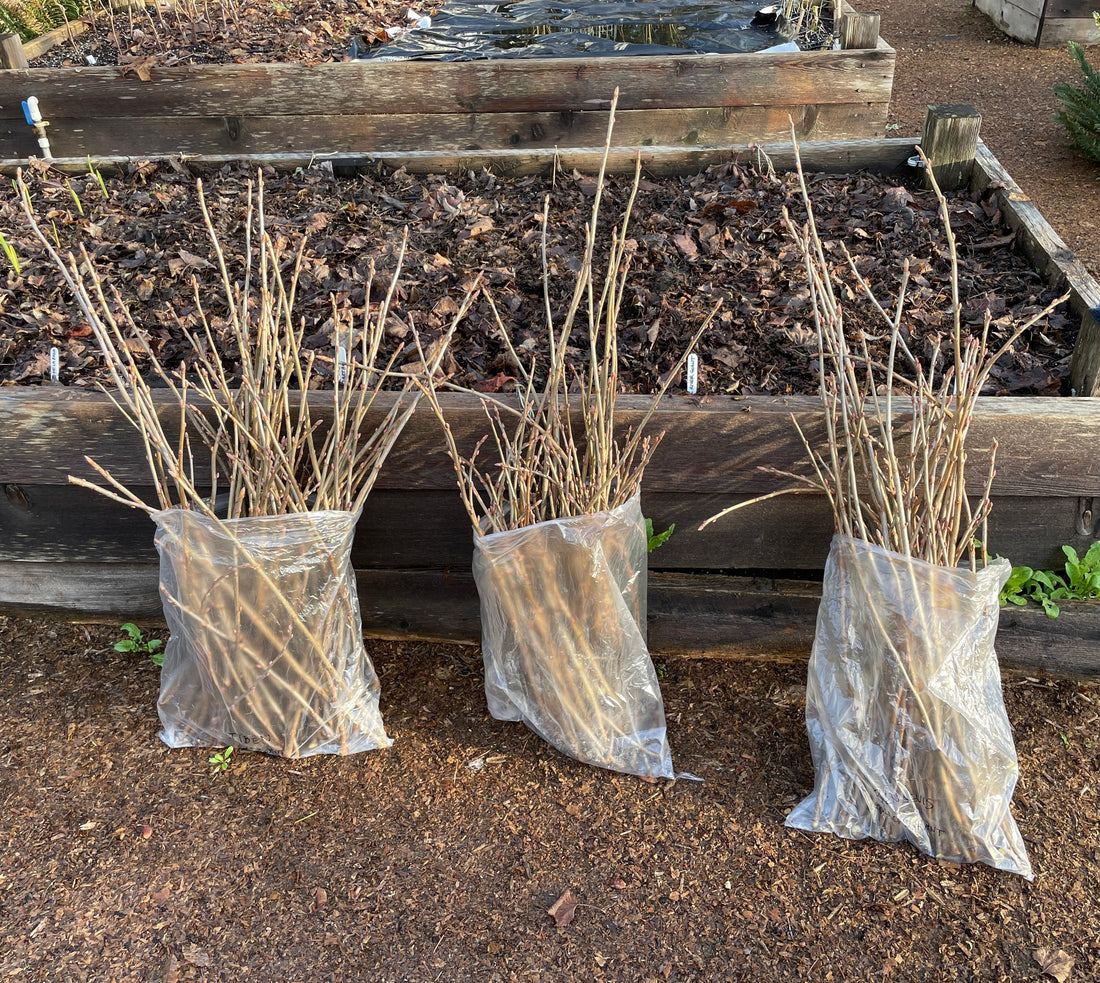*Disclaimer: This post may contain affiliate links. As an Amazon Associate I earn from qualifying purchases made through links in this post.
Rooting fig (Ficus carica) and blackcurrant (Ribes nigrum) cuttings during their dormant winter phase is one of the easiest and most reliable ways to propagate these fruiting plants.
Taking hardwood cuttings in late winter, before bud break, allows the plants to focus on root development before putting energy into new leaf growth. With just a few simple steps, you can successfully root your own fig and blackcurrant plants for your garden.
1. Collecting and Preparing Dormant Cuttings
The first step is to take cuttings from healthy, disease-free branches of fig or blackcurrant plants during late winter when the plants are fully dormant. Use sharp, sterilized pruners to cut 6- to 12-inch (15-30 cm) sections from one-year-old wood. Each cutting should be about the thickness of a pencil and contain at least three buds. Trim the bottom of the cutting at a 45-degree angle just below a bud and the top at a flat angle above a bud to prevent confusion when planting.
An optional step at this point is to sterilize the cuttings. This reduces the risk of your cuttings rotting before they have a chance to grow roots. Soak them in a 3% hydrogen peroxide solution for 5-10 minutes. Rise and air dry. Now dip the top cutting in melted wax (we use soy wax) to seal the wound and prevent the cutting from drying out.
2. Rooting Fig Cuttings
Figs root easily in a variety of mediums, but the most common method is to use a moist, well-draining mix such as a blend of coarse perlite and peat moss or sand, or potting mix. Avoid using unsterilized garden soil as it will introduce disease and mould spores. Place cuttings vertically in the soil, burying the bottom two-thirds while leaving at least one bud exposed above the surface. Keeping the cuttings warm (21–24°C or 70–75°F) is essential for root development. We use a heat mat to keep the soil warm. You can place them in a humidity dome, plastic bag, or mini greenhouse to maintain moisture. Or, you can wrap the section that will be above the soil surface with Parafilm, grafting tape or plastic wrap. Within 4–8 weeks, you should see root development.
3. Rooting Blackcurrant Cuttings
Blackcurrants are even easier to root than figs and can be planted directly into pots or into the ground, or rooted in water. Insert the cuttings about two-thirds deep into a loose, well-draining rooting mix, leaving one or two buds above soil level. Each bud will become one branch on your new bush. Leave one branch and it will be very large and vigorous. Leave three and they will divide the energy and be smaller. Either is okay – you can choose. Water well and place in a cool, sheltered location outdoors or in an unheated greenhouse. Unlike figs, blackcurrants don’t require high heat for rooting. They will begin forming roots naturally as temperatures rise in early spring. If rooting in water, be sure to change the water frequently (every 2-3 days).
4. Transplanting and Aftercare
Once the cuttings have developed a strong root system (typically in 8–12 weeks for figs and 4–6 weeks for blackcurrants), they can be transplanted into larger pots or directly into the garden. Gradually harden them off by exposing them to outdoor conditions longer and longer each day, over a week or two, before planting them in their final location. Both figs and blackcurrants thrive in well-drained soil with full sun to partial shade, ensuring strong growth and fruit production in the coming seasons.
By following these simple steps, you can successfully propagate your own fig and blackcurrant plants from dormant winter cuttings, ensuring an abundant harvest for years to come. Whether you're looking to expand your orchard or share plants with friends, this method is a rewarding and cost-effective way to grow delicious fruit at home.

